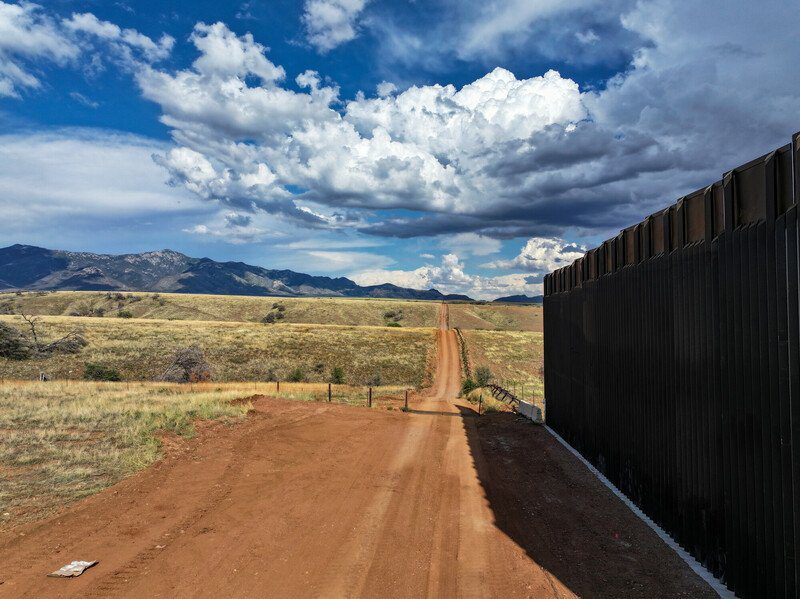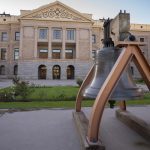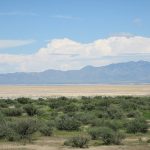- Border wall construction in the San Rafael Valley has renewed concerns about groundwater use.
- The documentary highlights past water declines and uncertainty about current pumping.
- Ranchers and conservation groups question the effects of waived environmental laws.
- Wildlife corridors and springs could face long-term disruption.
Friday, November 21, 2025 — A new documentary titled The Water and The Wall , released by Arizona Public Media on November 20, 2025, explores how ongoing border wall construction in the San Rafael Valley could affect groundwater, springs and the sensitive landscape of one of Arizona’s last unwalled border regions. The film features interviews with conservationists and a local rancher, presenting concerns about water use during construction and the long record of drought in this remote part of the state. (The video is embedded later in this article.)
, released by Arizona Public Media on November 20, 2025, explores how ongoing border wall construction in the San Rafael Valley could affect groundwater, springs and the sensitive landscape of one of Arizona’s last unwalled border regions. The film features interviews with conservationists and a local rancher, presenting concerns about water use during construction and the long record of drought in this remote part of the state. (The video is embedded later in this article.)
The San Rafael Valley sits south of Patagonia and east of Nogales. It is a sweeping grassland basin known for fragile spring ecosystems, cottonwood-lined draws and a stretch of the Santa Cruz River that crosses the international boundary twice. For decades the valley has served as a wildlife corridor for species that travel between Arizona and Sonora.
Questions Surround Groundwater and Construction Practices.
The documentary notes concerns that deep well drilling and dust-control measures for the wall require large volumes of groundwater. Conservation groups point to similar activity during former President Donald Trump’s first term, when wells were installed near the San Bernardino National Wildlife Refuge. According to those groups, groundwater pumping during that period contributed to declining water levels in nearby springs. The United States Fish and Wildlife Service has stated that water levels were already falling before construction began. Both sides acknowledge that there is no data showing exactly how construction impacted the water table.
point to similar activity during former President Donald Trump’s first term, when wells were installed near the San Bernardino National Wildlife Refuge. According to those groups, groundwater pumping during that period contributed to declining water levels in nearby springs. The United States Fish and Wildlife Service has stated that water levels were already falling before construction began. Both sides acknowledge that there is no data showing exactly how construction impacted the water table.
Construction of the new thirty-foot steel wall segment is underway after the federal government waived environmental laws under Section 102 of the Illegal Immigration Reform and Immigrant Responsibility Act of 1996 . The waivers remove requirements for environmental review, water use reporting and hydrologic studies that would normally occur before large projects.
. The waivers remove requirements for environmental review, water use reporting and hydrologic studies that would normally occur before large projects.
Local Ranchers Explain What Declining Water Means on the Ground.
The documentary includes comments from a rancher who has worked the land in the San Rafael Valley for decades. Like many ranchers in southeastern Arizona, he has seen wells run dry during long periods of drought. Springs on his property support native grasses, wildlife and livestock. He explains that additional groundwater pumping near the border could increase the risk that springs and wells may drop further.
The Arizona Republic reported similar concerns. In a November 20, 2025 article, the newspaper found that construction crews had dug new wells, set up equipment and were actively pumping groundwater for dust suppression and cement mixing. The Republic noted that some nearby ranches have already experienced declining well levels in recent years, and one well less than 1,000 feet from the border recently ran dry. Conservation groups told the paper that groundwater depletion during past border wall projects permanently reduced natural pressure in certain spring systems, requiring mechanical pumping to keep water flowing.
reported similar concerns. In a November 20, 2025 article, the newspaper found that construction crews had dug new wells, set up equipment and were actively pumping groundwater for dust suppression and cement mixing. The Republic noted that some nearby ranches have already experienced declining well levels in recent years, and one well less than 1,000 feet from the border recently ran dry. Conservation groups told the paper that groundwater depletion during past border wall projects permanently reduced natural pressure in certain spring systems, requiring mechanical pumping to keep water flowing.
Wildlife Corridors Could Be Disrupted
According to interviews in both the film and outside reporting, the San Rafael Valley is an important refuge for many species, including jaguars, ocelots, pronghorn, black bears and hundreds of migratory birds. The Center for Biological Diversity reported in September 2025 that construction has already begun on a planned twenty-seven-mile wall segment that could cut through one of the most significant wildlife corridors along the border.
reported in September 2025 that construction has already begun on a planned twenty-seven-mile wall segment that could cut through one of the most significant wildlife corridors along the border.
The Center documented wells pouring water during drilling activities and raised concerns that the new wall could restrict animal movement. Its staff noted that recent camera footage has captured wild jaguars in the valley and warned that closing this corridor could limit remaining pathways in the United States.
The Water & The Wall (Full Documentary).
The video is embedded below:
Environmental Laws Waived for Wall Construction.
The documentary references the federal government’s use of waiver authority to expedite border wall construction. Outside sources confirm that environmental laws such as the National Environmental Policy Act and the Endangered Species Act have been set aside for current projects. Similar waivers were also used for waterborne barrier construction in Texas earlier this year.
earlier this year.
These waivers allow construction to move forward without public environmental review, wildlife impact assessments or groundwater use disclosures. Conservation groups and local residents have filed lawsuits challenging the waivers, arguing that the process leaves communities without information about how water resources may be affected.
Cross-Border Concerns in Sonora.
Residents in Santa Cruz, Sonora, located about ten miles south of the border, have raised parallel concerns. According to reporting from Arizona Republic staff, the town depends heavily on groundwater for farming and ranching. The Santa Cruz River flows through both countries, and local officials said they have not been notified about where wells may be drilled or how pumping could affect their water supply. Conservation advocates interviewed for the documentary stated that groundwater in the valley sometimes flows south before moving northward again, meaning wells in Arizona could influence conditions in Mexico.
staff, the town depends heavily on groundwater for farming and ranching. The Santa Cruz River flows through both countries, and local officials said they have not been notified about where wells may be drilled or how pumping could affect their water supply. Conservation advocates interviewed for the documentary stated that groundwater in the valley sometimes flows south before moving northward again, meaning wells in Arizona could influence conditions in Mexico.
A Region Shaped by Water, History and Drought.
The San Rafael Valley has long endured drought cycles, yet its springs and wetlands have supported human communities, wildlife and cattle ranching for generations. The documentary presents the valley as a place where surface water and groundwater are tightly linked, and where even modest declines can affect plants, animals and ranching operations.
The film closes with images of a community gathering at the partially completed wall on November 15. Tribal members, conservationists and local residents shared stories, tied symbolic offerings to the steel beams and reflected on how the new barrier might alter the valley’s landscape.
Image:
San Rafael Valley border wall constructions on Sept 15, 2025. Photo courtesy of Russ McSpadden, Center for Biological Diversity .
.
FAQ
What is The Water and The Wall about?
It is a documentary by Arizona Public Media that examines how border wall construction in the San Rafael Valley could affect local groundwater, springs and wildlife corridors.
Why is groundwater a concern during construction?
Border wall construction typically requires large amounts of groundwater for cement mixing, drilling and dust control. In past projects, similar pumping contributed to water level declines in nearby springs and wells.
Why were environmental laws waived?
The Department of Homeland Security used federal waiver authority to expedite construction. The waivers remove requirements for environmental review and groundwater use reporting.
How might wildlife be affected?
The San Rafael Valley contains a major north-south corridor for jaguars, ocelots, black bears, pronghorn and other species. A continuous thirty-foot wall could restrict movement for many animals.
What concerns exist south of the border?
Residents of Santa Cruz, Sonora, depend on the same groundwater basin. Local officials expressed worry about potential water shortages and limited communication about construction plans.
Is there agreement about how construction affects the water table?
There is agreement that past declines occurred, but there is no data showing exactly how border wall construction influenced groundwater levels during earlier projects. The lack of required reporting adds uncertainty.




